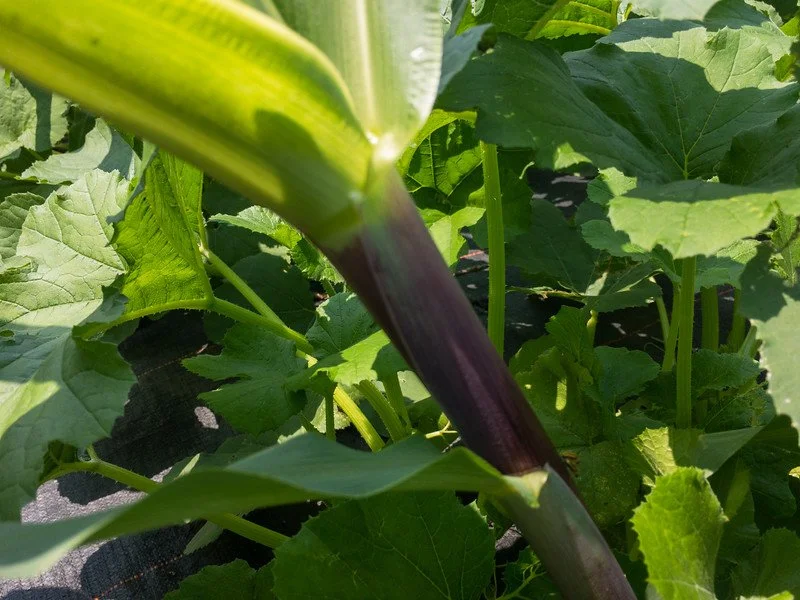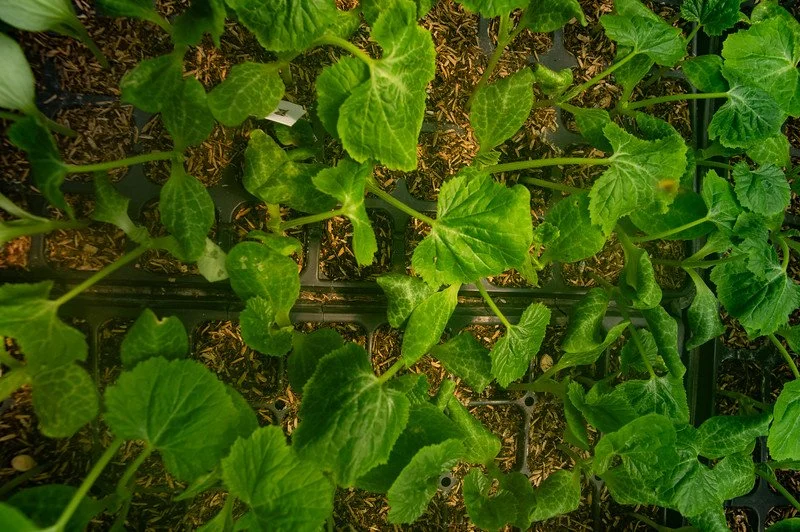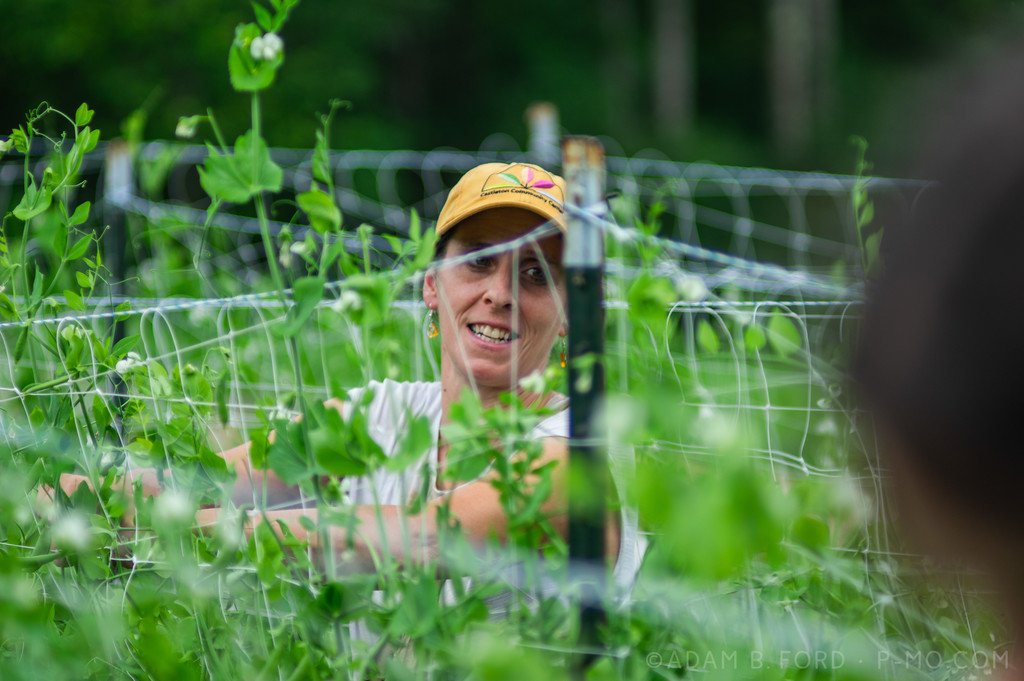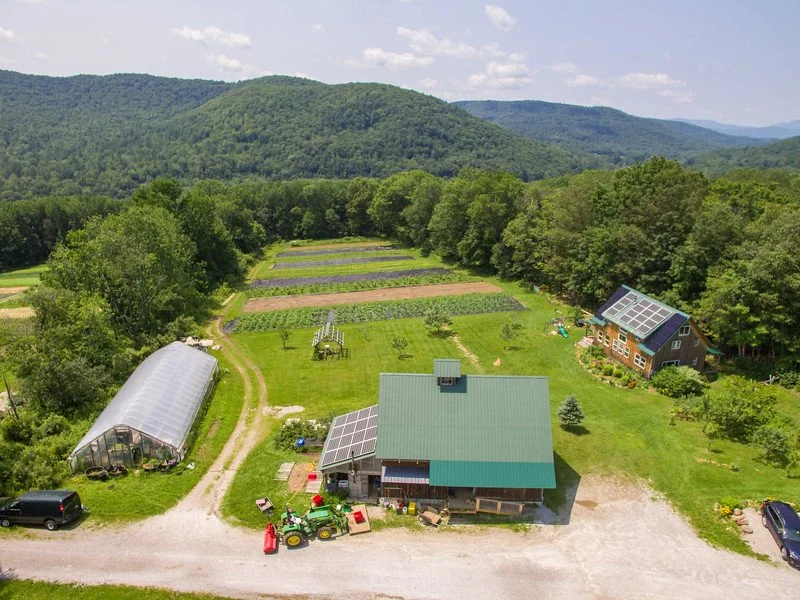7th Week of the Summer CSA season: Week of July 18th
most of the farm, photo by Adam Ford
CSA Balance Due
If you haven’t already paid, your balance is due. You can pay online through your account (with a card or e-check ACH payment), mail a check to Evening Song Farm 48 Nice Road, Cuttingsville VT 05738, leave a check or cash in the CSA cash box at the barn, send money with Venmo @eveningsongcsa, or use EBT. It’s very cool to pay in smaller chunks, just let us know what your payment plan is.
eggplant plant, photo by Adam Ford
lacinato kale, photo by Adam Ford
This Week’s Availability
This week we will have red radish bunches, yellow beets, red beets, carrots, parsley, mini romaine lettuce heads, garlic scapes, caraflex cabbage, red cabbage, rainbow chard, baby lettuce, green curly kale bunches, lacinato kale bunches, rhubarb, cilantro, scallions, cucumbers, zucchini, yellow summer squash, purple kohlrabi, endive, basil, sugar snap peas, and heirloom tomatoes.
Ordering closes at noon on Tuesdays for Wednesday bags, and at midnight on Wednesdays for Friday bags.
You do not need to fill out the form if you plan to come to the barn on Tuesdays, Wednesdays or Thursdays to pick out your items yourself.
step one for BLT, photo by Adam Ford
Caraflex cabbage, photo by Adam Ford
Farm News
Oooof, what is there to write about but the storm. Our hearts are heavy for everyone who was hit so hard by these rains and catastrophic flooding. It’s hard to take all the devastation we have seen, and know that some of you have experienced.
We have been feeling an incredible amount of gratitude for being so safe on this hillside, out of the valley. We are grateful for all the many pieces of care, generosity, persistence, support, guidance, access to new land, etc, that allowed us to move an entire farm from the river valley onto the hillside 12 years ago. As we walked around observing the water moving on the farm on Monday, we felt all the ways this location was possible. Thank you to everyone who was part of that history over the past 12 years. Some of you have been CSA members since we first eagerly showed up on Route 103 in 2011. (And some new CSA members have asked what I am referencing when I say we lost our first farm: scroll down halfway on this link if you want to learn about that.)
In terms of the “damage” up here to this farm, it was minimal, but still noted. We have done a lot of earth movement over the years to prepare for large rain events growing veggies on a hillside. While we are away from any swift moving bodies of water, being on a slope means that runoff during heavy rainfall runs down our fields, washing away fertile soil a little bit at a time. As we walked around on Monday watching the water flow, we were relieved to see that, for the most part, all the effort put into managing erosion on our slope was working well. There were some places that need touch ups, but given the weather conditions we were very grateful to see all of our practices working as they should: swales diverting water off of our fields, mulched fields slowing down water and protecting the soil, roadways with enough room in the ditches to accommodate all the moving water. An interesting loss we experienced was to some spinach and arugula plantings that would have been ready to harvest last week for CSA: after 6.5 inches of rain on Monday, on top of already saturated soil, the plants experienced a condition call hypoxia. When some plant roots are in completely saturated soil for long enough, the tiny roots die from lack of oxygen, rendering the root system unable to transport necessary water to the leaves. We noticed the effects of it Tuesday afternoon: in the hot sun, the plants just wilted and died. (It’s a bit ironic that one outcome of of too much water is that the plants become unable to send water to their leaves.) Since we lost a farm 12 years ago, these crop losses are sad and frustrating for sure, but not a big deal. It’s a reminder that we won’t be immune to these dramatic rain events from climate break down, even though we got to avoid some of the worst things many areas experienced this week.
We had to cancel a 50-pound wholesale order when we went to harvest spinach and found this, photo by Ryan Fitzbeauchamp
We were going to surprise CSA with this perfectly ready arugula being ready last week, but found this sad mess instead, photo by Ryan Fitzbeauchamp
The observation we paid the closest attention to was the soil movement in the “uncovered” fields (fields recently direct seeded to things like baby greens or carrots) versus the “covered” fields, which are transplanted crops that are either mulched with straw or transplanted directly into cover crop residue. These no- and low-till areas of the farm had no noticeable soil erosion from all the water falling on the fields. The bare, direct seeded areas were much more vulnerable. Though the erosion in these areas was on the minor end of the spectrum because of all the grassy swales we have around each field, moving most of the water around the growing spaces, even a small amount of soil loss in one large storm is unideal, especially since these types of storms will be increasing in frequency and intensity.
direct seeded fall carrots that we will have to reseed, because many seeds were likely washed away, which would leave a pretty spotty stand… you can see the minor, but still concerning, amount of erosion in these bed…. certainly could be a lot worse, but we are always trying to think of what soil we pass on to the next farmers, photo by Ryan
but look how beautifully secure the soil is under these brussels sprouts that were no-till planted into cover crop residue, photo by Ryan
similar, vulnerable bare soil that experienced some erosion, photo by Ryan
ditto to these mulched cabbages… the covered soil really prevents erosion, photo by Ryan
Over time we have been shifting to growing crops we can do with low- and no-till methods, but there are some crops we either haven’t figured out how to do without direct seeding in bare soil, or we aren’t ready to give up growing yet. For example, I just cannot imagine giving up growing baby lettuce mix. It is my personal favorite, it grows so well for us, it’s one of our most popular items, and it’s just different from head lettuce (which I also love, but sometimes I just want cute, little baby leaves!) But these rain events make us reevaluate: is climate change asking us to change our diets to reflect vegetables we can more ethically grow when we think about the long term care of the topsoil? Good questions to mull around in our brains. At the end of the day, I want to feel like I am doing everything reasonably possible to address the time and place we are in coping with the climate crisis.
I know many of you had homes, businesses, and home towns that were hit hard. I am hoping you are finding the assistance you need. Please reach out to us if there are ways we can support you during this time. Recovery takes an incredibly long, draining toll. Farms around the state were hit pretty hard by this storm, and if anyone is curious about how to support Vermont’s farmers, NOFA-VT put together a helpful blog post this week. The most important item (to me) that they describe in that post is “Advocate for Policies that Result in a More Resilient Food System: While providing immediate support to mitigate the challenges farms are experiencing right now is critical, our work at NOFA-VT is also about advocating for longer-term systems changes and policy reforms that will lead to a more just and climate-resilient food system. We need YOUR HELP to put pressure on our elected officials to advocate for a farm bill that is transformative and will set in motion the transition away from a system of farming and food that is guided by profit and competition and exploits land, people, and livestock. Sign up here to receive a pre-stamped postcard and help us inundate our federal delegation with calls to action!”
Scientists say these storms will continue to cause chaos for our communities, and we will begin to find limits to the resilience of farmers. There are only so many catastrophic weather related crises farms can handle before they throw in the towel. This season so far, Vermont farmers have dealt with an uncharacteristically harsh deep freeze in May, ending the season before it started for some fruit producers, drought conditions (hard to remember that early spring was too dry for some parts of the state), wildfire smog that made it hard for some farm workers to work in June, and now disastrous flooding in July. We cannot band aid farm problems from one stress to the next unless we are able to change federal policy on our climate actions. Consider researching the climate plans of any candidates you vote for in any future elections, and then hold their feet to the fire when they don’t fulfill their promises. As one of you told me this week: “Wow, that was the fastest 100 years of my life!” Let’s pressure our government leaders to make policies that will make these storms 100-year events, rather than as frequent as they are becoming.
Sending all of you who are still managing the aftermath in our thoughts,
-ESF Team: Ryan, Kara, Molly, Cindy, Galen, Katie, K2, Taylor, Vanessa, and Bryan (and Sky and Soraya)
Weekly Recipe
It’s tomato season! I usually keep some bruschetta in our fridge at all times this time of year, because it’s great on everything: as a salad dressing, in omelets, on sandwiches, on crackers, crostinis, quick pasta, etc. When I make it this time of year before garlic is ready, I pre-blend about half a bunch of garlic scapes with olive oil and then use that garlic scape paste in place of the garlic cloves in the recipe.
baby romaine, photo by Adam Ford
grain corn and winter squash, photo by Adam Ford
All the poppies are self seeded, photo by Adam Ford
next round of zucchini plants, photo by Adam Ford
squash beetles: a pest and a pollinator, photo by Adam Ford
sunflower, photo by Adam Ford
garlic is almost harvestable, photo by Adam Ford
Carmens are still small, photo by Adam Ford
baby lettuce with some weeds, photo by Adam Ford
Ryan fixing the chainsaw, photo by Adam Ford
Vane picking peas, by Adam Ford
Molly picking peas, photo by Adam Ford
more Molly picking, photo by Adam Ford
Monday evening I walked around to check out where the water was moving. This is a low spot between a field and a tractor driving lane where we want the water to flow, to avoid the field, and the driving area, so this picture is a success shot, photo by Kara
flower garden, photo by Adam Ford
tunnel field, photo by Adam Ford
barn and prop house, photo by Adam Ford
maybe we will get to harvest elderberries this year, photo by Adam Ford
Cindy solving stuff, photo by Adam Ford.
Taylor picking peas, photo by Adam Ford
Ryan, photo by Adam Ford
view of the barn field after the storm, feeling so much gratitude for everything being intact for the most part, photo by Adam Ford
Stickney and Vane harvesting carrots, photo by Adam Ford
tunnel field, photo by Adam Ford
barn field, photo by Adam Ford
we grow some dill in our home garden because our kids love to pick and eat it like a snack, photo by Adam Ford





































